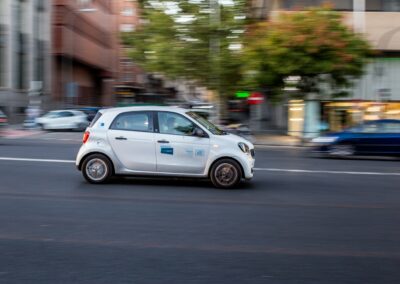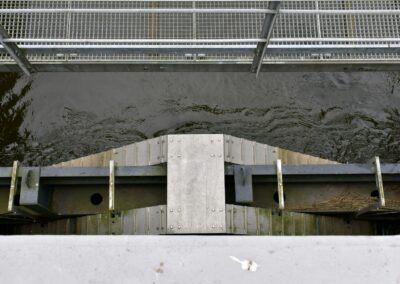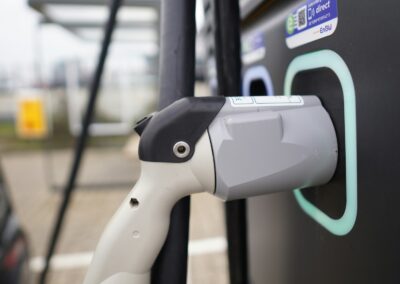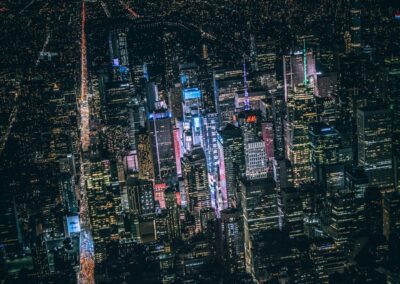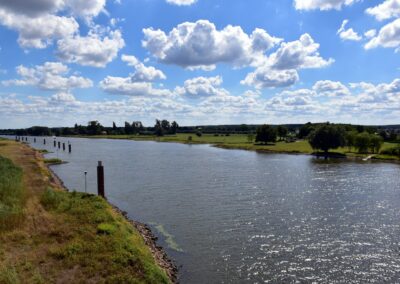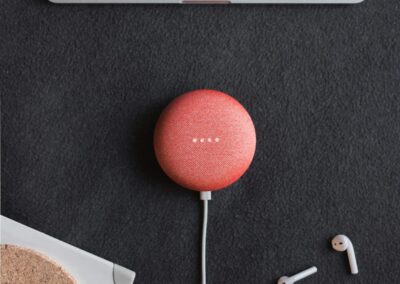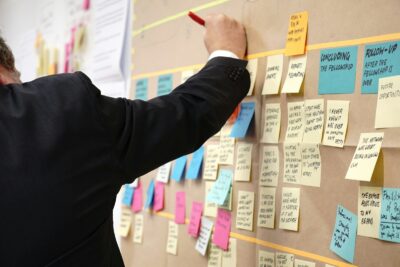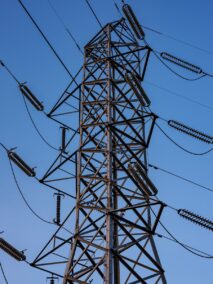How Digital Twins Revolutionize Energy Management in Urban Environments
Introduction to Digital Twins in Smart Cities
Digital twins in smart cities energy management represent a groundbreaking approach to optimizing urban infrastructure and resource utilization. By creating virtual replicas of physical assets and systems, digital twins enable city planners and managers to simulate, analyze, and enhance various aspects of urban living, including energy distribution and consumption. In rapidly growing cities like Riyadh and Dubai, where the demand for efficient resource management is paramount, digital twins offer a powerful tool to ensure sustainable and resilient urban development.
The concept of digital twins involves integrating real-time data from physical environments into digital models, allowing for dynamic and accurate simulations of urban systems. In the context of energy management, digital twins provide a comprehensive view of how energy is distributed and consumed across a city. This technology allows for the optimization of energy grids, reduction of waste, and enhancement of overall efficiency, contributing to more sustainable urban living.
For business executives and city planners in Saudi Arabia and the UAE, adopting digital twins in smart cities represents a strategic advantage. This technology not only supports efficient resource management but also aligns with broader goals of sustainable development and technological innovation. By leveraging digital twins, cities can meet the growing demands of their populations while minimizing environmental impact and maximizing the effectiveness of their energy infrastructure.
Optimizing Energy Distribution with Digital Twins
One of the most significant benefits of digital twins in smart cities energy management is their ability to optimize energy distribution. By creating a digital model of a city’s energy grid, planners can simulate various scenarios and assess how different factors impact energy flow. This capability allows for the identification of inefficiencies, potential outages, and areas where energy consumption can be reduced.
In cities like Riyadh and Dubai, where rapid urban development often strains existing infrastructure, digital twins offer a solution for balancing energy supply and demand. For example, digital twins can simulate the impact of integrating renewable energy sources, such as solar or wind power, into the grid. This simulation helps in planning the optimal placement and configuration of these sources to maximize their effectiveness and reduce reliance on non-renewable energy.
Additionally, digital twins enable real-time monitoring and management of energy systems. By continuously updating the digital model with live data, city planners can quickly respond to changes in energy demand, detect faults, and implement corrective measures. This proactive approach ensures that energy distribution remains stable and efficient, supporting the needs of a growing urban population while minimizing waste and reducing costs.
Enhancing Resource Consumption Efficiency
Another critical advantage of digital twins in smart cities energy management is their role in enhancing resource consumption efficiency. By providing detailed insights into how energy is used across various sectors, digital twins help identify opportunities for conservation and optimization. This capability is particularly valuable in urban environments where efficient resource management is essential for sustainability and economic growth.
In the context of smart cities in Saudi Arabia and the UAE, digital twins can be used to analyze energy consumption patterns across different building types, industrial processes, and transportation systems. For instance, by examining data from smart meters and sensors, city planners can pinpoint areas where energy is being used inefficiently and recommend measures to improve performance. This might include optimizing heating, ventilation, and air conditioning (HVAC) systems, adjusting lighting schedules, or implementing energy-saving technologies.
Furthermore, digital twins support the development of smart grids that adapt to real-time energy consumption data. By incorporating machine learning and predictive analytics, digital twins can forecast energy needs and adjust distribution accordingly. This approach not only improves resource efficiency but also supports the integration of smart technologies, such as electric vehicles and energy storage systems, which contribute to a more sustainable and resilient urban infrastructure.
Case Studies: Successful Implementation of Digital Twins in Energy Management
Several cities worldwide have successfully implemented digital twins to enhance energy management and optimize resource distribution. For example, Singapore has utilized digital twins to create a comprehensive model of its energy infrastructure, enabling efficient management of its smart grid and reduction of energy waste. This approach has resulted in significant cost savings and improved sustainability for the city.
In the Middle East, cities like Dubai are also exploring the potential of digital twins for energy management. Dubai’s Smart City initiative includes the use of digital twins to improve energy efficiency across various sectors, from residential buildings to industrial facilities. By leveraging this technology, Dubai aims to achieve its sustainability goals and enhance the quality of life for its residents.
Similarly, Riyadh is integrating digital twins into its urban planning efforts to address the challenges of rapid growth and resource management. By adopting digital twins for energy management, Riyadh is positioning itself as a leader in sustainable urban development and technological innovation. This approach not only supports the city’s Vision 2030 goals but also demonstrates the potential of digital twins to drive positive change in smart cities.
The Future of Digital Twins in Smart Cities Energy Management
The future of digital twins in smart cities energy management holds immense potential, with advancements in technology expected to further enhance their capabilities. As artificial intelligence, machine learning, and IoT technologies continue to evolve, digital twins will become even more sophisticated and capable of providing deeper insights into urban energy systems.
In the Middle East, the adoption of digital twins is likely to increase as cities seek innovative solutions to manage their growing energy demands. The integration of advanced analytics and real-time monitoring will enable even more precise optimization of energy distribution and consumption, contributing to more sustainable and resilient urban environments. As digital twins become more prevalent, they will play a crucial role in shaping the future of smart cities and supporting their development goals.
Moreover, the integration of blockchain technology with digital twins can enhance the security and transparency of energy management data. By providing a secure and immutable record of energy transactions and usage, blockchain can ensure the integrity of information and support more reliable decision-making. As digital twins continue to evolve, their synergy with emerging technologies will drive significant advancements in smart city energy management, leading to more efficient, sustainable, and innovative urban environments.
Conclusion: Embracing Digital Twins for Sustainable Urban Energy Management
Digital twins are revolutionizing energy management in smart cities by providing powerful tools for optimizing resource distribution and consumption. By creating virtual replicas of urban systems, digital twins enable city planners and managers to simulate scenarios, identify inefficiencies, and enhance overall efficiency.
For business executives and city planners in Saudi Arabia, the UAE, Riyadh, and Dubai, adopting digital twins represents a strategic opportunity to improve energy management and support sustainable urban development. The technology’s ability to optimize energy grids, enhance resource efficiency, and integrate with emerging technologies ensures that cities can meet the demands of their growing populations while minimizing environmental impact.
As digital twins continue to advance, their potential to drive innovation and efficiency in smart cities will only increase. By embracing this technology, cities can achieve their sustainability goals, improve quality of life for residents, and lead in the future of urban development. The future of smart cities is digital, and those who leverage digital twins will be well-positioned to thrive in an evolving urban landscape.
#DigitalTwins #SmartCities #EnergyManagement #ResourceOptimization #SaudiArabia #UAE #Riyadh #Dubai #ArtificialIntelligence #Blockchain #Metaverse #ExecutiveCoaching #GenerativeAI #ModernTechnology #BusinessSuccess #Leadership #ProjectManagement




